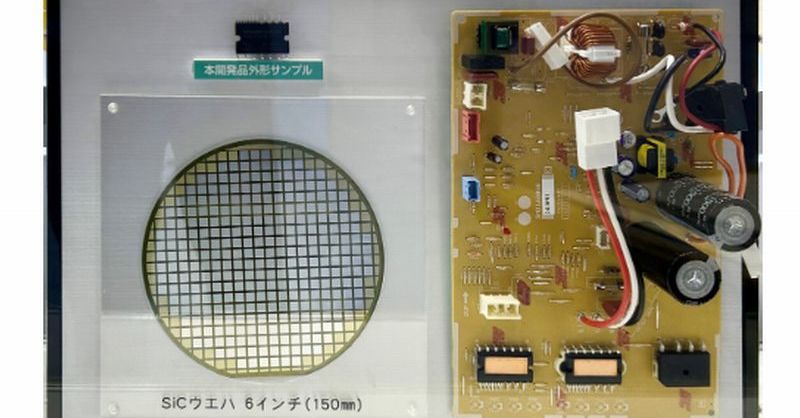New IPM with SiC: Revolutionizing Air Conditioner Power Consumption
Air conditioners are essential for comfort, especially during scorching summer months. However, their significant energy consumption contributes substantially to household electricity bills and overall carbon emissions. A groundbreaking advancement in power management, utilizing Silicon Carbide (SiC) technology, promises a significant reduction in AC power consumption, ushering in a new era of energy-efficient cooling. This article delves into the details of this innovative technology and its potential impact on the future of air conditioning.
Understanding the Role of Intelligent Power Modules (IPM)
Traditional air conditioners rely on inefficient power conversion processes. Intelligent Power Modules (IPMs) are crucial components that manage and regulate the power flow within the AC unit. They control the compressor, fan motors, and other electrical components, ensuring optimal performance. However, traditional IPMs suffer from significant power losses due to their reliance on older semiconductor technologies.
The Inefficiency of Traditional Semiconductor Materials
Traditional IPMs predominantly use silicon-based Insulated Gate Bipolar Transistors (IGBTs). While functional, these IGBTs generate considerable heat and energy loss during operation, leading to reduced efficiency and increased energy consumption. This heat also requires additional cooling mechanisms, further increasing complexity and cost.
Silicon Carbide (SiC): A Game-Changer in Power Electronics
Silicon Carbide (SiC) is a wide-bandgap semiconductor material offering several advantages over traditional silicon. Its superior properties allow for:
- Higher switching frequencies: SiC devices can switch on and off much faster than silicon IGBTs, leading to more efficient power conversion.
- Lower conduction losses: SiC exhibits significantly lower resistance, reducing energy loss during operation.
- Higher operating temperatures: SiC can withstand higher temperatures without degradation, leading to a more robust and reliable system.
- Smaller size and weight: SiC-based IPMs are typically smaller and lighter than their silicon counterparts, simplifying AC design and installation.
The Impact of SiC-based IPMs on Air Conditioners
The integration of SiC-based IPMs into air conditioners translates into several key benefits:
- Reduced energy consumption: The significantly lower power losses result in a noticeable decrease in overall energy consumption, saving consumers money on their electricity bills.
- Increased efficiency: Higher efficiency translates to lower environmental impact, reducing carbon emissions and promoting sustainability.
- Improved performance: Faster switching speeds contribute to more precise control of the cooling system, potentially leading to better temperature regulation and comfort.
- Enhanced reliability: SiC's ability to withstand higher temperatures improves the long-term reliability and lifespan of the AC unit.
Market Implications and Future Outlook
The adoption of SiC-based IPMs is expected to disrupt the air conditioning market significantly. Major manufacturers are already investing heavily in research and development to integrate this technology into their next-generation products. The potential for reduced energy consumption and environmental impact makes SiC-based IPMs an attractive proposition for both consumers and the environment.
Challenges and Considerations
While the advantages are significant, challenges remain in widespread adoption. The higher initial cost of SiC-based components compared to silicon-based alternatives might present a barrier to entry for some manufacturers. However, the long-term cost savings from reduced energy consumption are expected to outweigh the initial investment over the product's lifespan.
Conclusion: A Cooler, Greener Future
The introduction of SiC-based IPMs marks a significant advancement in air conditioning technology. By drastically reducing power consumption and improving efficiency, this innovation contributes to a more sustainable and cost-effective cooling solution. As the technology matures and costs decrease, we can anticipate a wider adoption of SiC-based IPMs across the air conditioning industry, ushering in a cooler, greener future for us all.
Keywords: SiC, Silicon Carbide, IPM, Intelligent Power Module, Air Conditioner, Energy Efficiency, Power Consumption, Semiconductor, Sustainability, Green Technology, Cooling, HVAC, Energy Savings, Wide-Bandgap Semiconductor
Related Articles: (Internal links to relevant articles on your website if applicable)
External Links: (Links to reputable sources supporting the information presented, e.g., research papers, industry news articles)
